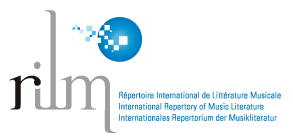Pichuco y su “goma de borrar”: diferencias entre texto y ejecución en un tango arreglado por Astor Piazzolla para la orquesta típica de Aníbal Troilo
Palabras clave:
arreglos, práctica interpretativa, modernidad, tópicos, época de oroResumen
Reconozco auditivamente en la introducción de un tango interpretado por Aníbal Troilo y su orquesta típica, la utilización del topos de la guitarra. Cuando accedo a las partituras manuscritas de ese arreglo, descubro que la introducción fue tachada y que la escritura original difiere de la ejecución grabada. Al constatar que el arreglo está firmado por Astor Piazzolla y que en las historiografías no aparece como autor del mismo, soy consciente de que es una fuente primaria de gran valor testimonial. El contraste del texto y sus anotaciones secundarias con sus dos versiones grabadas, fue diversificando la investigación y redefiniendo el objeto de estudio inicial. Lo que en principio fue una aproximación analítica a un recurso composicional, se convierte en un recorrido a través de diversas metodologías de investigación que el documento propone.
Este artículo es un estudio de caso acerca del funcionamiento del arreglo y la praxis interpretativa en la orquesta típica de tango. Troilo como director y Piazzolla como arreglador, dos de los músicos más importantes de la historia del género, son estudiados en este trabajo que aporta datos significativos sobre la recepción y la conformación de los estilos del tango en su época de oro.
Descargas
Publicado
Número
Sección
Licencia
Derechos de autor 2019 Andrés Serafini

Esta obra está bajo una licencia internacional Creative Commons Atribución-NoComercial 4.0.
Atribución/Reconocimiento-NoComercial 4.0 Internacional
https://creativecommons.org/licenses/by-nc/4.0/
Usted es libre de:
- Compartir — copiar y redistribuir el material en cualquier medio o formato.
- Adaptar — remezclar, transformar y construir a partir del material.
- La licenciante no puede revocar estas libertades en tanto usted siga los términos de la licencia
Bajo los siguientes términos:
- Atribución — Usted debe dar crédito de manera adecuada, brindar un enlace a la licencia, e indicar si se han realizado cambios. Puede hacerlo en cualquier forma razonable, pero no de forma tal que sugiera que usted o su uso tienen el apoyo de la licenciante.
- No Comercial — Usted no puede hacer uso del material con propósitos comerciales.
- No hay restricciones adicionales — No puede aplicar términos legales ni medidas tecnológicas que restrinjan legalmente a otras a hacer cualquier uso permitido por la licencia.
Avisos:
No tiene que cumplir con la licencia para elementos del material en el dominio público o cuando su uso esté permitido por una excepción o limitación aplicable.
No se dan garantías. La licencia podría no darle todos los permisos que necesita para el uso que tenga previsto. Por ejemplo, otros derechos como publicidad, privacidad, o derechos morales pueden limitar la forma en que utilice el material.






